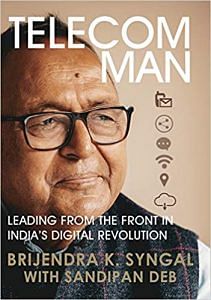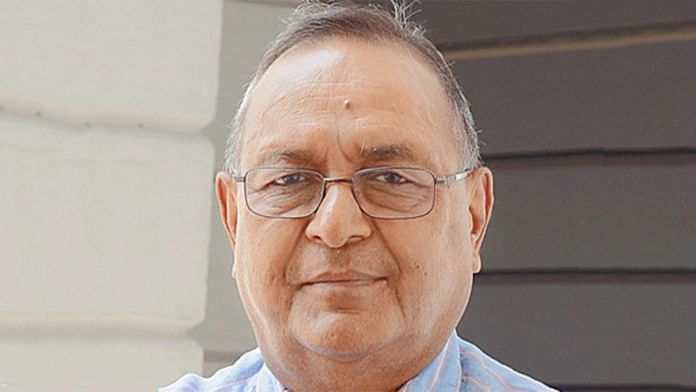There are more than 550 million Indians connected to the internet today, that is, more than 40 per cent of the population. This number also makes our country the world’s second largest online market. Yet, when we at VSNL introduced internet services two and a half decades ago in 1995 even China did not have the net. The Chinese vice-minister visited VSNL in 1996 to learn the tricks of the trade.
There had been a rudimentary version of the internet available in the country since 1986, when the Educational Research Network (ERNET)—a joint undertaking of the Department of Electronics (DoE) and the United Nations Development Program (UNDP)—was launched but ERNET was only meant for the use of the educational and research communities. Also, the software that would truly define the internet and make it accessible to the layman—the web browser— had not yet been invented.
Developed in the American defence laboratories, and initially used only by the US military and research establishment, the US government 99 was now allowing the internet to be used by all. In the Indo-Pacific region, countries like Japan and Australia had already launched the service. Therefore, there was an inquiry from the government as to why we should not venture into internet provision. The government had three options—DoT, Mahanagar Telephone Nigam Limited (MTNL) and VSNL. Eventually the government leaned towards us because we had the international connectivity and relationships with external carriers. At the time of commissioning of the SEA-ME-WE2 cable in 1994 (see Chapter 2), we were approached to start considering providing internet as a service.
We started planning as soon as we got the green light. We also started talking to our correspondents, like British Telecom, MCI and AT&T, about how they had gone about it. The building blocks were soon put together. The essential component was the connectivity to an internet service provider outside India. Our choices were very limited; we could get to Australia, Japan, Hong Kong, the US and the UK. We zeroed in on 128 kbps lines to these countries. Simultaneously, we started setting up the hardware.
We chose five cities as the first lot for internet connectivity— Delhi, Bombay, Calcutta, Madras and Pune. We left out Bangalore and chose Pune because we had a large set-up there. From the logistics point of view, Pune was easier but from the requirement point of view, Bangalore was certainly more important. We set up the equipment, the servers and connectivity between these five cities so that we had some sort of a fail-safe system. Honestly speaking, according to our intelligence gathering, we thought we had done a reasonably good job. We started the beta testing about forty-five days before the launch date, which we had set as 15 August 1995—actually the day before, so that the announcement would come on Independence Day.
Also read: No way PM Modi could’ve used email in 1988, says man who brought internet to India
***
So when VSNL introduced the internet in the country, they were happy to be around to bounce off ideas and suggest ways to make the service more user-friendly and popular.
Our own staff was encouraged to use the internet system as much as possible to get a feel of what was going on. We recruited youngsters who were tech-savvy and curious. All of us took up the challenge to provide a world-class service and we did it!
The proof of that was the NASSCOM meet at the Nehru Centre in Bombay in 1996. Dewang Mehta came to me and said: ‘Mr Syngal, this is the opportunity of a lifetime. We need to demonstrate what the internet is all about. Can you get a couple of 2 mbps lines into Nehru Centre?’
Now that would not be easy, to get two 2 mbps lines from VSNL to Nehru Centre. But I said to my people: ‘This is a god sent opportunity. We have mastered the art of providing digital connectivity. Let’s show the world what we can do.’
So we had a booth at the Nehru Centre where we would give live demonstrations of downloads. The excitement among the young people was tremendous. There would be a stampede every day.
Mr R.K. Takkar, chairman of the Telecom Commission, heard about it and came down to see it. The staff asked me whether they should clear the crowd around the booth for him. I said: ‘No, let him wade through the crowd. Let him see the euphoria among the youth.’ They still tried to make way for him when he visited but yet he was quite amazed by what he saw. Someone remarked in jest that we did not need to rent a crowd—the crowds came like bees homing into their hives or iron filings drawn to a magnet. Such was the euphoria.
After that we never looked back and continued to provide wider connectivity, which ultimately resulted in private sector participation. There was a clamour for opening up the space for private players. There were many meetings that went on till late at night, discussing the issue. The meetings were chaired by none other than A.P.J. Abdul Kalam, then defence and scientific adviser, who would go on to become President of India, in his South Block office. The high point of the meetings in those foggy Delhi January evenings was a nonstop supply of steaming hot idlis and crisp medu vadas. The meetings would generally end up after midnight.
My stand was that if the government wanted to open up internet services, let it, but there were security issues. We were challenged that nobody could track a customer down from a mere email account name. We had to convince them that the account name is for the public but the system converts that to a binary number which is used to track a customer down to his address. A lesson in Boolean algebra was no help to the scientist in Kalam. We were outnumbered by his cronies from DRDO, the likes of Dr Vidyasagar, et al. Our intelligence agencies, too, questioned the hasty decision based on uninformed mob frenzy, like it was some sort of gold rush.
Also read: Telecom sector crisis shows India is hanging up on the future
Also, we knew the pains we had gone through to set up the whole system, how difficult it was, but finally, it was the government’s decision and I was not going to question its wisdom. So internet services were opened up, but DoT and VSNL continued to set up more and more nodes across the country. My public view was that I loved competition but I loved killing the competition even more. Of the some 400 companies which applied for the gold rush, the vast majority ended up losing money. Today, even after twenty-five years, one can count the number of internet service providers on the fingers of one hand.
 This excerpt from Telecom Man: Leading from the Front in India’s Digital Revolution by Brijendra K. Syngal and Sandipan Deb has been published with permission from Westland Books.
This excerpt from Telecom Man: Leading from the Front in India’s Digital Revolution by Brijendra K. Syngal and Sandipan Deb has been published with permission from Westland Books.




Sam Pitroda, the Godfather of all, appears to have been conscientiously forgotten.